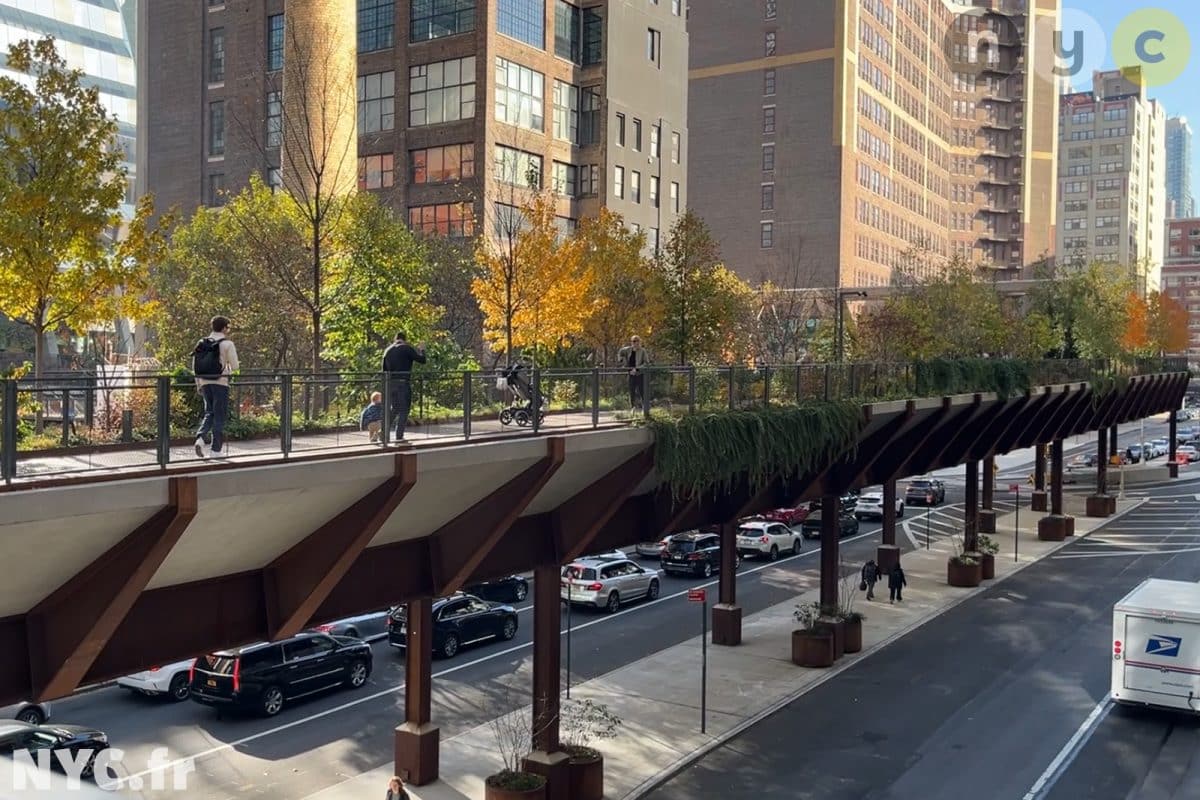In the heart of Manhattan, the High Line rises like an urban jewel, offering a unique experience to the eight million visitors who walk along it every year. This former railway line transformed into a suspended park stretches for 2.3 kilometres, winding between skyscrapers and offering unparalleled views of the city that never sleeps.
The fascinating history of the High Line
The history of the High Line dates back to the 1930s, when the Meatpacking District was a bustling industrial district. To remedy the safety problems caused by the heavy traffic, an overhead railway line was built 10 metres above the ground. This line, nicknamed the “West Side Line”, was mainly used to transport goods.

With the decline of rail transport in the 1950s and 60s, the line was gradually abandoned. The last train ran on it in 1980, leaving the structure to grow wild. Demolition seemed inevitable until two local residents, Joshua David and Robert Hammond, founded the ‘Friends of the High Line’ association in 1999 to save this urban relic.
Their vision? To transform this wasteland into a suspended park, inspired by the Promenade Plantée in Paris. Mayor Michael Bloomberg was won over by the idea, and in 2009 the first section of the High Line was inaugurated, followed by two more in 2011 and 2014.
Structure and access to the High Line
The High Line consists of three main sections, each offering a unique experience. Access is facilitated by 12 entry points equipped with staircases, 5 of which have lifts to ensure accessibility for all. In 2023, a new extension, the Moynihan Connector, was added, linking the High Line directly to Penn Station.
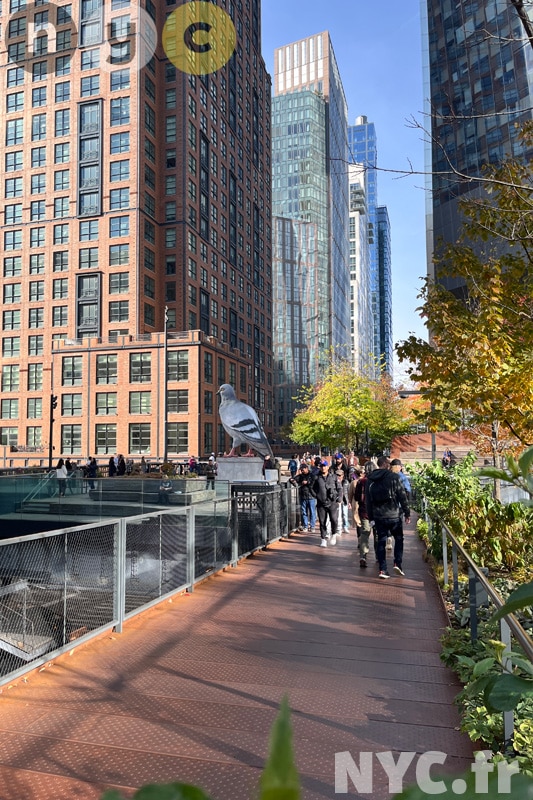
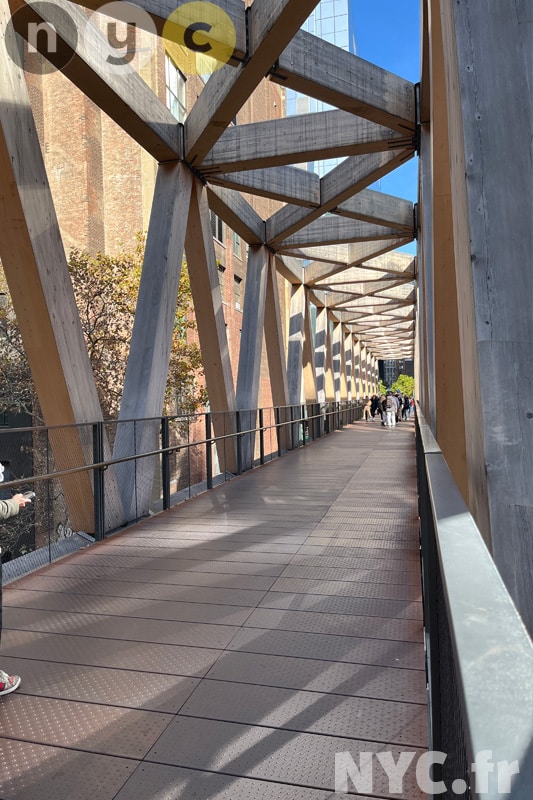
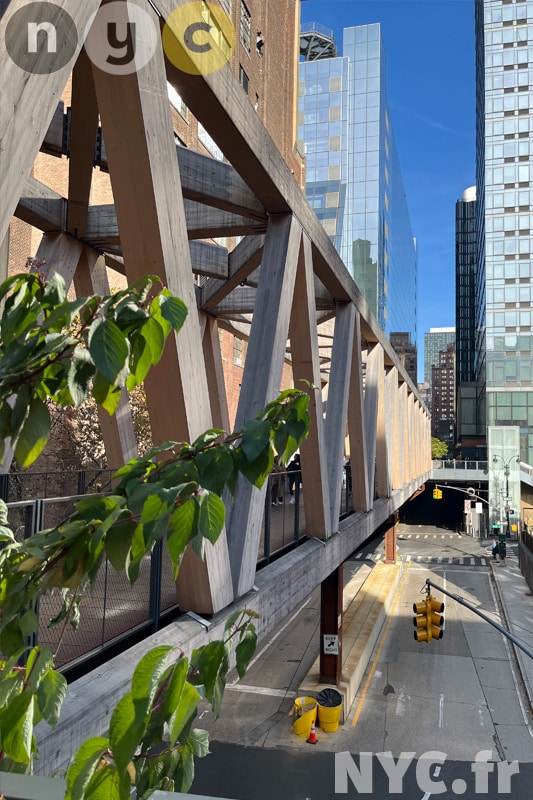
The three sections of the High Line
1. Southern Section
This first section runs from Gansevoort Street to 20th Street. This is the oldest section, opened in 2009. It runs through the heart of the Meatpacking District and offers spectacular views over Chelsea. Points of interest :
- The Tiffany & Co. Foundation Overlook: a terrace offering panoramic views of 14th Street
- Chelsea Market Passage: a covered passageway ideal for a break in the shade
- W 17th St: an urban High Line Observation Deck overlooking 10th Avenue
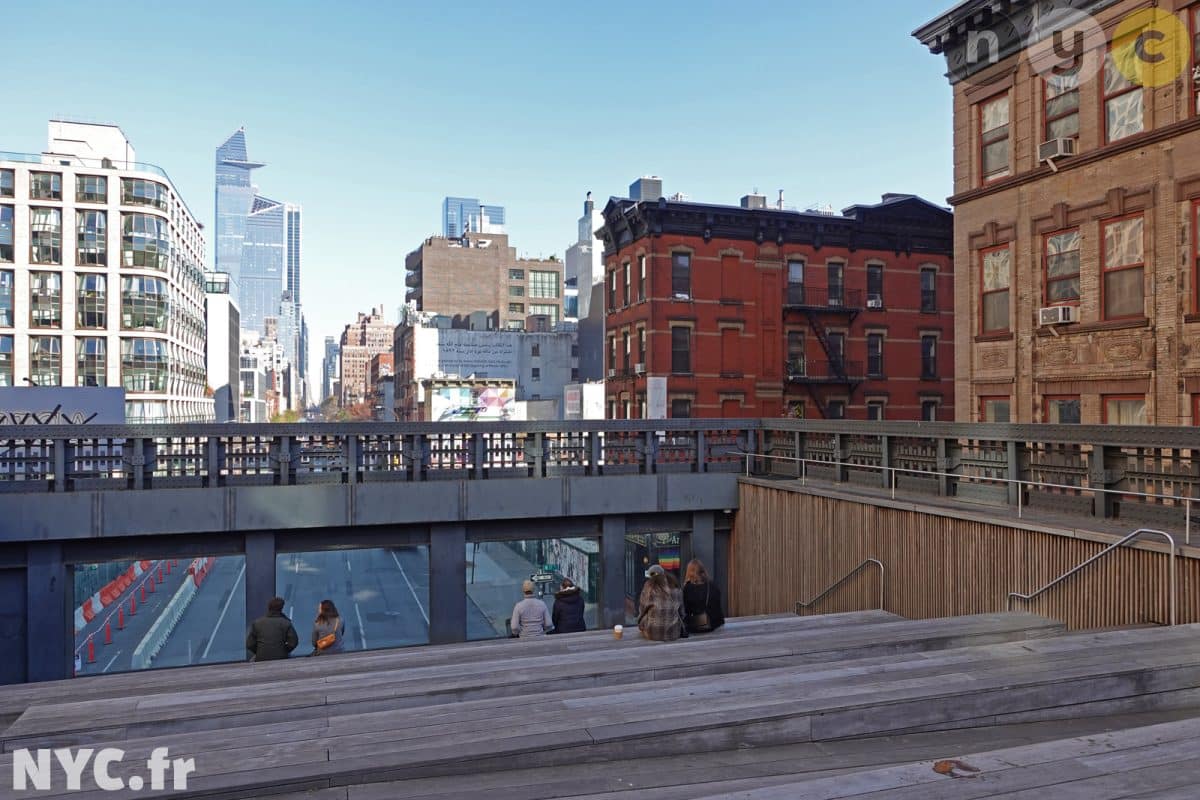
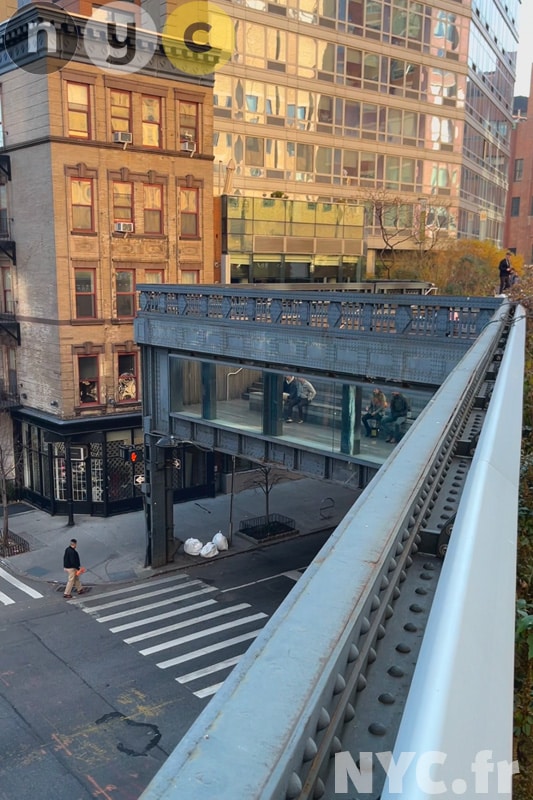
2. Central section
This section runs from 20th Street to 30th Street. Opened in 2011, it features denser vegetation and wider spaces. Highlights:
- 23rd Street Lawn: a lawn ideal for sunbathing
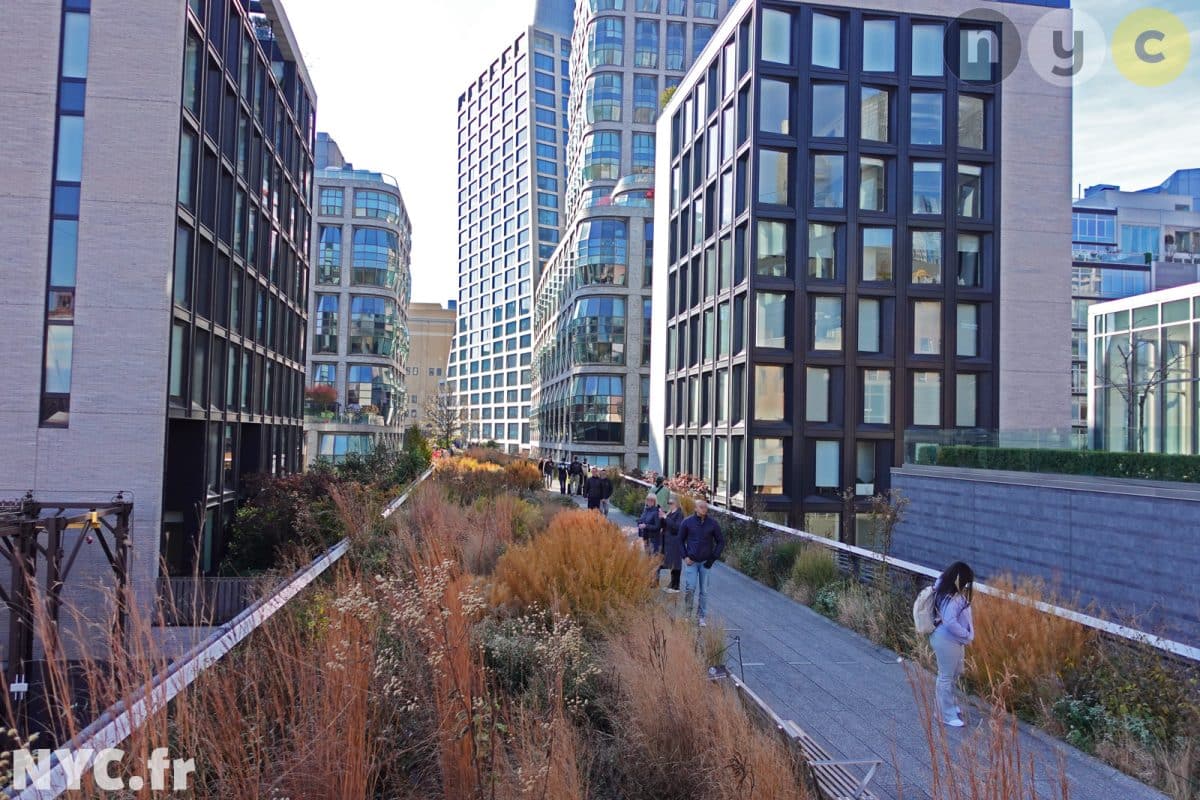
3. Northern section
The final section, inaugurated in 2014, stretches from 30th Street to 34th Street. It offers breathtaking views of the Hudson Yards development. Points of interest:
- The Pershing Square Beams: a children’s play area integrated into the structure
- The Spur: an extension at 30th Street, housing the High Line Plinth dedicated to contemporary art
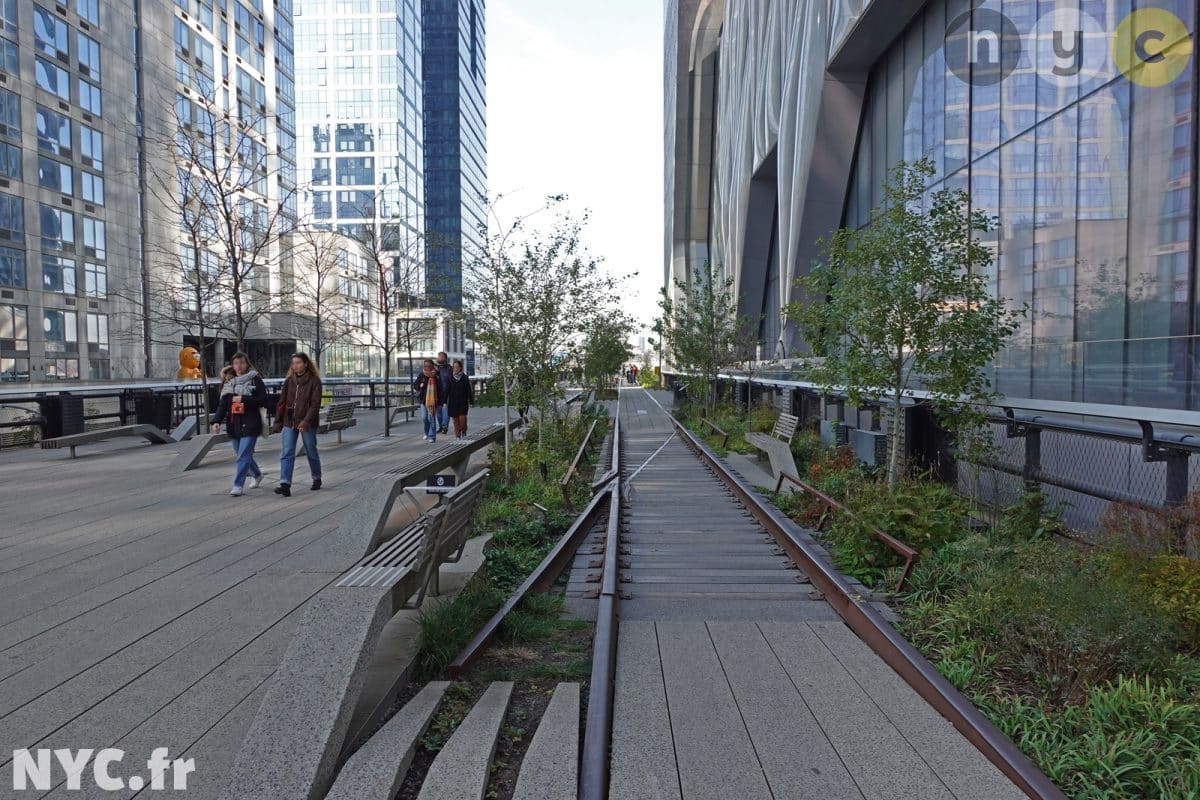
Each section has its own personality, reflecting the evolution of the project and the unique characteristics of the neighbourhoods it passes through. Tip: for a complete experience, plan to cover all three sections in one visit. Start in the south and finish with the spectacular view over Hudson Yards.
Essential practical information
The High Line runs along the Hudson River, between 34 and Gansevoort Streets. Opening times vary according to the season:
- Summer (1 June – 30 September): 7am – 11pm
- Spring (1 April – 31 May) and Autumn (1 October – 30 November): 7am – 10pm
- Winter (1 December – 31 March): 7am – 7pm
The good news? Admission is totally free!
The High Line: a model of urban ecology
The High Line is more than just a promenade: it’s a veritable urban ecosystem. It plays a crucial role in retaining rainwater, contributing up to 80% of its absorption. This helps to reduce run-off and relieve the city’s sewage system.
The plants have been carefully selected, giving preference to local, hardy species. Interestingly, many of the plants are inspired by those that naturally colonised the structure during its years of neglect. Maintenance is carried out ecologically, without pesticides, using instead a homemade‘compost juice‘ made from natural products.
The High Line’s lighting has been designed to minimise light pollution, using downward-facing LEDs. Even the choice of wood for the furniture – FSC-certified Ipé – reflects a concern for sustainability, with an estimated lifespan of 100 years.
A unique visitor experience
Every step along the High Line offers a new perspective on New York. Breathtaking views of the Empire State Building, theHudson River and the Meatpacking District punctuate the route. Art is everywhere, with sculptures, installations and murals changing regularly, transforming the promenade into an open-air gallery.
A must-see is 10th Avenue Square, an urban High Line Observation Deck offering a fascinating view of the traffic on 10th Avenue. It’s the perfect place to sit and watch the urban ballet unfold below.
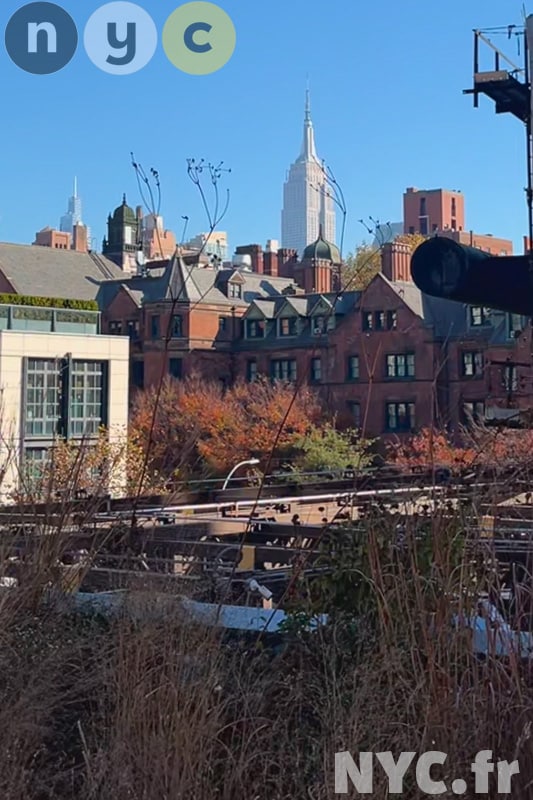
A rich and varied programme
The High Line is more than just a park; it’s a place of life and culture. Throughout the year, a host offree activities are on offer:
- Guided tours to discover the history and botany of the site
- Outdoor yoga and meditation sessions
- Dance performances and concerts
- Art workshops for young and old
- Bird and insect watching
In summer, the High Line comes alive with food stalls and local crafts. Don’t miss the free guided tours organised on Tuesdays at 6.30pm and Saturdays at 10am from May to October. Meet at the Gansevoort Street entrance, but arrive early as places are limited! Tours are in English, more information.
The “Friends of the High Line” association
The success and continued existence of the High Line owe a great deal to the“Friends of the High Line” association. This non-profit organisation provides 70% of the annual budget needed to run the park. It organises volunteer programmes, enabling New Yorkers to get involved in the upkeep and animation of this unique site.
Thanks to their hard work, the High Line remains a dynamic and innovative space that is constantly evolving. If you would like to support their work, donations can be made via the official website.
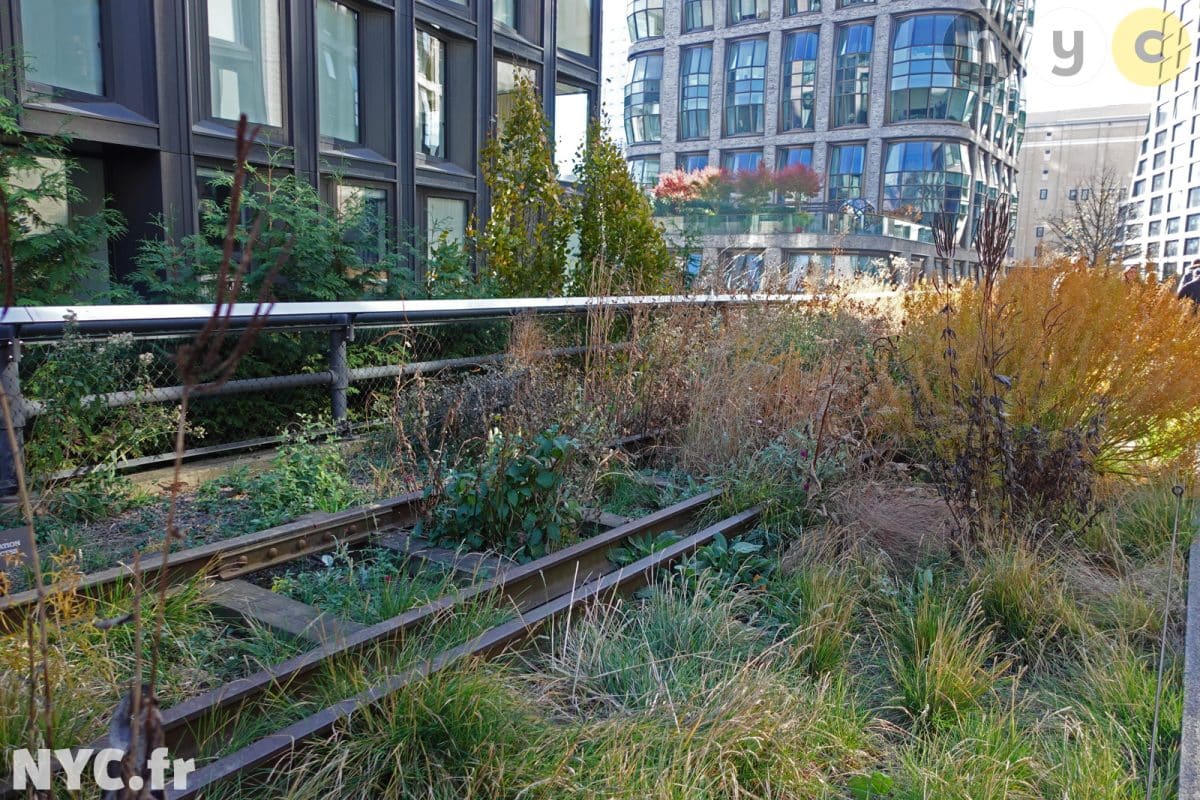
Practical tips for a successful visit
To make the most of your visit, here are a few tips:
- The best time to visit depends on your preferences. Early in the morning for the peace and quiet, late in the afternoon to admire the sunset, or in the evening for the night-time atmosphere.
- Toilets are available at the 16th Street and Gansevoort Street entrances.
- Free water fountains are scattered along the route.
The High Line is fully accessible for people with reduced mobility. The five lifts provide easy access, and the route is designed to be wheelchair-friendly.
Bear in mind that it is not possible to get on and off this route at any time, so here are the different access points:
- 28th Street
- 26th Street.
- 20th Street.
- 18th Street.
- 16th Street.
To get to the park with your child or in a wheelchair, here are the other entrances:
- Gansevoort Street.
- 30th Street.
- 34th Street.
- 14th Street.
- 23rd Street.
What’s not allowed on the High Line
However, it’s also important to know that walking along the High Line is subject to certain conditions and even prohibitions. All along this legendary avenue, you are not allowed to :
- Smoke or consume alcoholic beverages.
- Walk your dog.
- Rollerblade or skateboard.
- Ride a bicycle.
- Walk on the lawn.
- Picking flowers.
- Do all kinds of shopping.
The High Line in its urban context
The High Line has profoundly transformed the neighbourhoods it passes through. The Meatpacking District, once an industrial area, has become one of the trendiest neighbourhoods in New York. Chelsea, for its part, has seen many contemporary art galleries spring up along the route.
A number of attractions in the surrounding area are well worth a visit:
- The Vessel, a unique architectural structure north of the High Line
- The Whitney Museum of American Art to the south
- Chelsea Market, a gourmet’s paradise
- The Standard Hotel, literally spanning the High Line

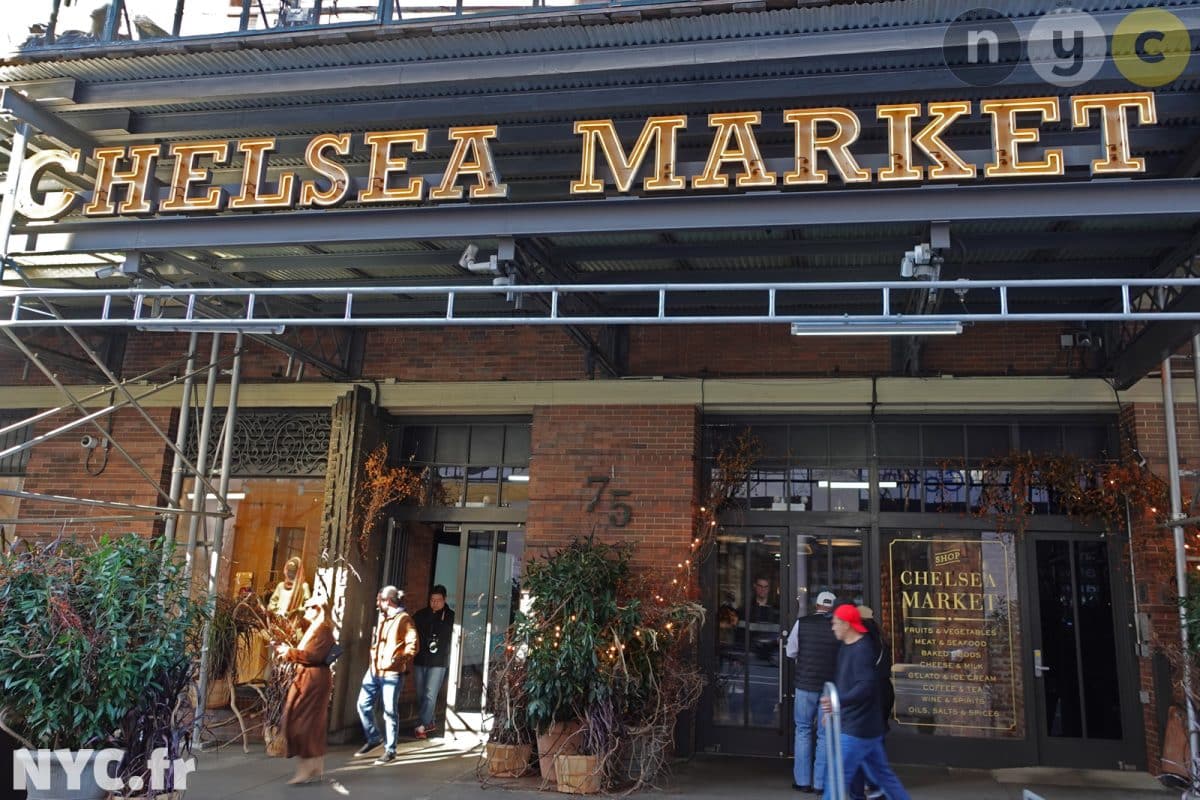
The impact of the High Line on urban development is such that it has become a model for many cities around the world.
Unique and unusual features
The High Line is full of surprises. It is a great place toobserve urban wildlife. Birds nest in the trees, and the flower beds attract numerous butterflies. A real haven of biodiversity in the middle of Manhattan!
Fun fact: the High Line has become a favourite spot for New York celebrities. Don’t be surprised if you bump into a celebrity on your walk! It has become a prime setting for film and television, appearing in numerous movies and series.
A place for artistic expression
The High Line is not just a park, it’s a veritable open-air art gallery. The “High Line Art” programme offers temporary exhibitions throughout the year, constantly transforming the visitor experience.
From monumental sculptures to interactive installations and ephemeral performances, art in all its forms has its place on the High Line. These works interact with the urban environment, creating moments of surprise and reflection for walkers.
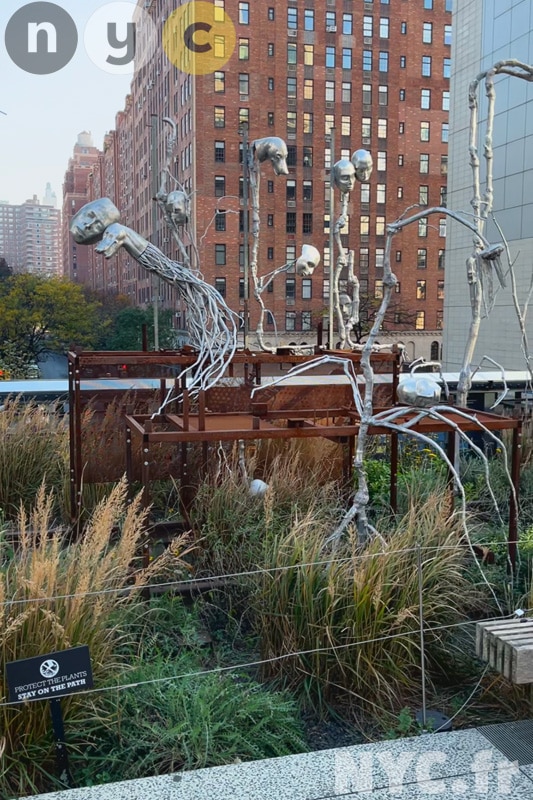
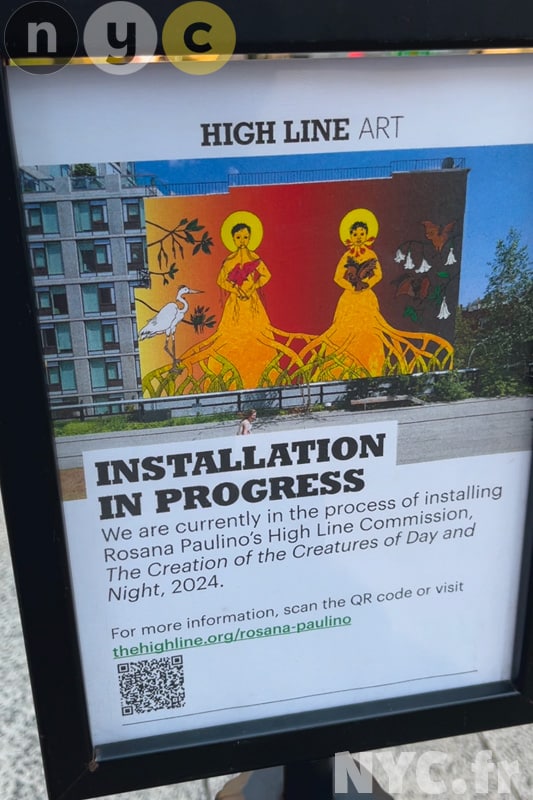
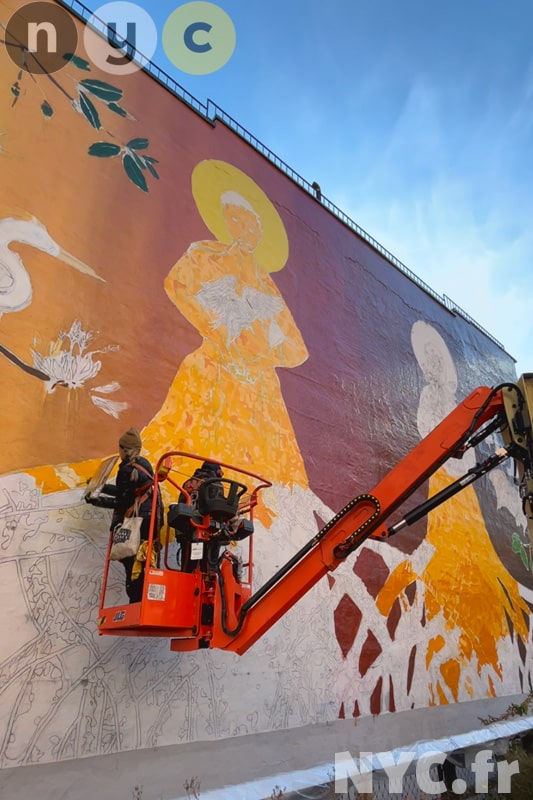
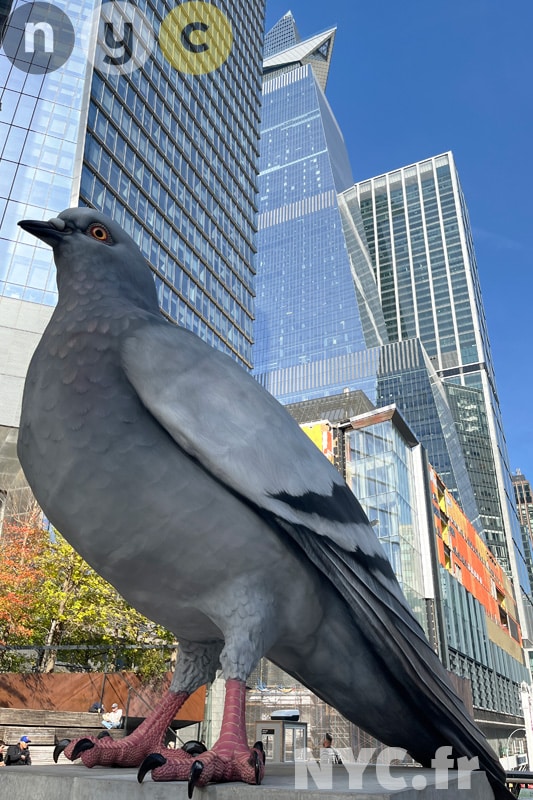
One artistic highlight is at 30th Street. This is where the “High Line Plinth” is located, a platform dedicated to monumental sculptures that change regularly. These imposing works provide a striking contrast with the surrounding urban landscape.
Planning your visit
To make the most of your visit, you have two options:
- Start in the south(Gansevoort Street) and work your way north. This option allows you to finish with the spectacular view of Hudson Yards.
- Start in the north and head south. You can then finish your walk in the bustle of the Meatpacking District.
Allow around 2 hours for a leisurely visit, taking time to stop at the various points of interest. But don’t hesitate to devote half a day if you want to take part in an activity or enjoy the relaxation areas.
Combine your visit to the High Line with other attractions. For example, start at the Whitney Museum, then head up the park to Hudson Yards, where you can climb up to The Edge observatory for a panoramic view of the city.
The High Line through the seasons
Each season offers a unique experience on the High Line:
- In spring, the first blooms bring an explosion of colour.
- Summer is the busiest season, with a host of events and lush vegetation.
- Inautumn, warm colours contrast sharply with the grey of the buildings.
- In winter, the bare structure reveals its raw beauty, sometimes enhanced by a blanket of snow.

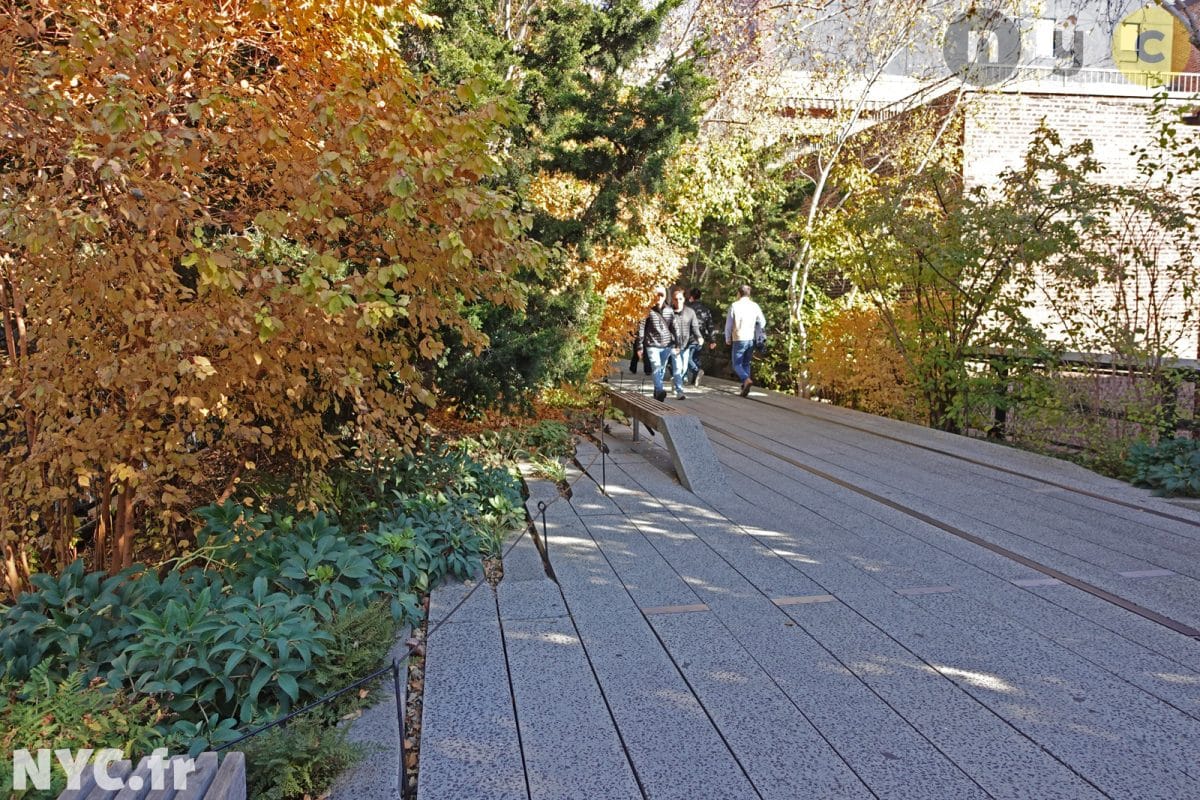
Whatever the time of year, the High Line is sure to charm you. Don’t hesitate to come back at different times of the year to discover its many faces.
Ready for a stroll?
The High Line is much more than just a park; it’s a unique urban experience. It embodies New York ‘s ability to reinvent itself, transforming an obsolete industrial structure into an innovative and vibrant green space. Whether you’re a tourist passing through or a seasoned New Yorker, this park always offers something new to discover.
So the next time you’re in New York, take the time to stroll through this hanging garden. Let yourself be carried away by the unique atmosphere of this hanging garden, admire the works of art, enjoy the breathtaking views over the city, and live an experience that will remain engraved in your memory. The High Line isn’t just a walk, it’s a journey through New York’s history, art and urban ecology. One thing’s for sure: you’ll never see the city in the same way again!
